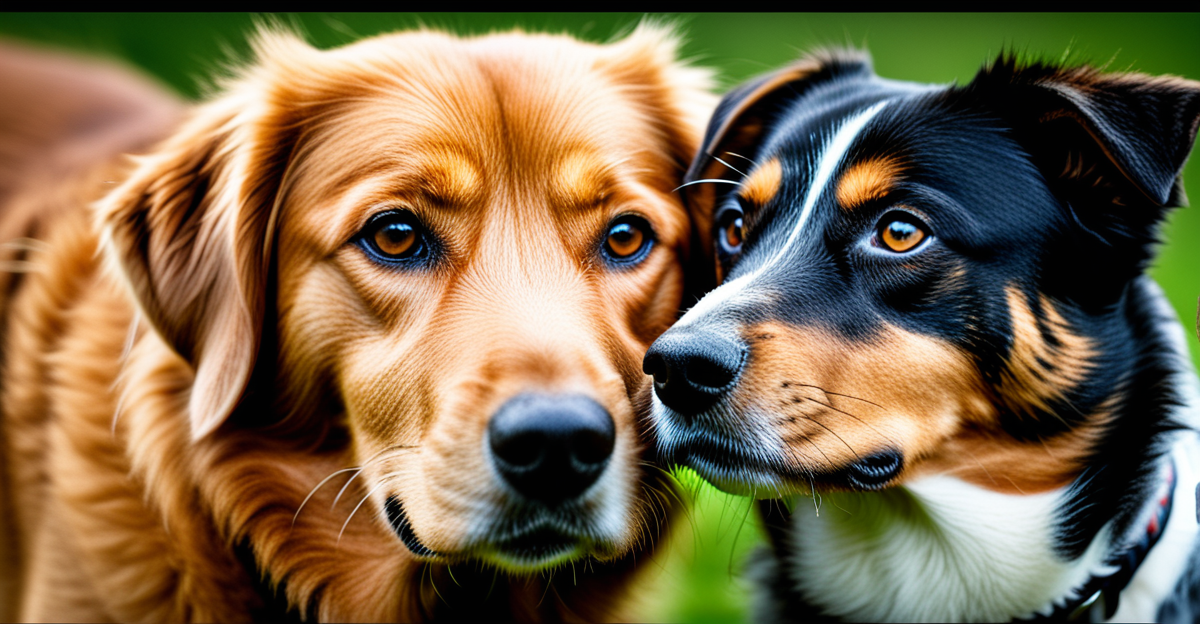Latest Pet Ownership Statistics in the UK
Understanding UK pet ownership statistics provides valuable insight into how pet demographics evolve. Currently, approximately 45% of UK households own at least one pet, marking a steady increase from previous years. Dogs remain the most common pets, followed closely by cats, though ownership trends vary regionally. Urban areas tend to have higher cat ownership, while rural households often prefer dogs, reflecting lifestyle differences.
Age is a significant demographic factor. Younger adults (ages 25-34) show a growing inclination toward owning smaller or alternative pets such as rabbits and reptiles. In contrast, older demographics still predominantly favor traditional pets like dogs and cats. These shifts highlight broader societal changes and changing priorities in lifestyle and leisure.
Also to see : Why Are UK Pet Owners Choosing Exotic Animals Over Traditional Pets?
Further analysis of UK pet market data reveals that multi-pet households are becoming more frequent, indicating stronger emotional and social bonds between owners and animals. Household trends also show variations influenced by factors such as income and housing type, demonstrating the complexity behind pet demographics UK.
By examining these statistics closely, stakeholders can better target services, products, and policies to meet the evolving needs of pet owners across the UK.
Also read : What are the best ways to introduce a new pet into a UK household?
Shifting Preferences in Pet Types and Breeds
Current UK pet preferences show notable shifts in the popularity of different species. While dogs remain the most popular choice, demand for alternative pets such as reptiles, rabbits, and small mammals has increased significantly. This change reflects broader changing pet trends driven by lifestyle factors and urban living constraints, which often limit space and time for traditional pets like large dog breeds.
Cats maintain a strong presence, especially in urban settings, where smaller households prefer pets needing less outdoor exercise. The rise in popularity of certain dog breeds also correlates with owners’ evolving needs—smaller, low-maintenance breeds are favored by younger adults, aligning with busier lifestyles.
Breed choices are influenced by health considerations, activity levels, and even fashionable trends promoted through media. Additionally, awareness around breed-specific health issues is shaping popular pets UK preferences toward breeds with fewer hereditary concerns. Overall, this dynamic landscape in pet demographics UK underlines a growing diversity of pet ownership, reflecting changes in societal habits and individual preferences.
Latest Pet Ownership Statistics in the UK
Understanding UK pet ownership statistics reveals that pet ownership is distributed unevenly across regions and age groups. National data shows that approximately 45% of households own pets, but the composition and number of pets per household vary greatly. Urban areas tend to have higher rates of cat ownership, influenced by space constraints and lifestyle, while rural regions show greater dog ownership linked to outdoor activities.
Examining pet demographics UK highlights demographic shifts, with younger adults increasingly favoring smaller or less traditional pets, such as rabbits and reptiles. This shift aligns with urban living trends and evolving leisure preferences. In contrast, older demographics maintain steady interest in dogs and cats, reflecting established habits.
Analysis of UK pet market data indicates more multi-pet households, suggesting deeper emotional engagement with pets. Income levels and housing types also significantly impact ownership patterns. For example, higher-income households often invest more in premium pet care products and services, underscoring the interplay between economic factors and pet ownership trends. This detailed view of pet demographics UK helps clarify how ownership patterns evolve in response to social and economic influences.
Latest Pet Ownership Statistics in the UK
Recent data on UK pet ownership statistics indicates that nearly 45% of households currently own pets, yet ownership patterns display notable regional and demographic variances. In urban areas, space limitations encourage smaller pets, while rural regions favor dogs due to outdoor lifestyle compatibility. This division emphasizes the influence of environment on pet demographics UK.
Age also plays a crucial role. Younger adults increasingly choose less traditional pets like rabbits and reptiles, correlating with urban living and busy schedules. Conversely, older age groups maintain a steady preference for dogs and cats, reflecting longstanding habits. These demographic shifts are critical when interpreting UK pet market data trends.
Multi-pet households are becoming more common, signifying deeper emotional connections between owners and pets. Additionally, higher income levels correlate with increased spending on premium pet products and services, highlighting economic impact within pet demographics UK. Together, these factors paint a comprehensive picture of evolving pet ownership in the UK, underscoring the complexity of current trends in UK pet ownership statistics.
Latest Pet Ownership Statistics in the UK
Current UK pet ownership statistics reveal that about 45% of households own pets, reflecting sustained interest across diverse demographics. However, pet demographics UK demonstrate important regional and age-related differences. Urban households prefer smaller pets, influenced by space and lifestyle constraints, while rural homes favor dogs, with outdoor activities shaping ownership choices.
Age groups exhibit distinct preferences. Younger adults increasingly select less traditional pets like rabbits and reptiles, aligning with contemporary urban lifestyles. This evolving pattern contributes to the complexity of UK pet market data, which also shows a rise in multi-pet households. Multi-pet ownership suggests deeper emotional engagement with animals and influences demand for a broader range of pet care products.
Income levels further impact pet ownership trends. Higher-income households tend to spend more on premium services and products, intensifying market segmentation within pet demographics UK. Monitoring these factors helps clarify shifting patterns in ownership rates and household compositions, giving a nuanced perspective on the UK’s pet landscape.
Latest Pet Ownership Statistics in the UK
Analysis of UK pet ownership statistics reveals that nearly half of UK households have pets, but ownership rates vary widely by region and demographic. Urban areas tend to show higher ownership of smaller pets due to space limitations, while rural households favor larger animals, especially dogs, reflecting lifestyle and environmental factors. This regional divergence is a critical element within pet demographics UK.
Age groups present distinct patterns: younger adults increasingly adopt less traditional pets such as rabbits and reptiles. This trend aligns closely with lifestyle preferences and the constraints seen in more densely populated areas. In contrast, older demographics maintain a consistent preference for conventional pets like cats and dogs, underscoring stable demand segments within UK pet market data.
Multi-pet households are on the rise, suggesting stronger emotional bonds influencing pet acquisition. Additionally, income levels heavily sway pet ownership trends, with wealthier households investing more in premium pet care products and services. These economic factors further enrich the analysis of UK pet ownership statistics, highlighting the nuanced interplay between social factors and pet ownership choices.
Latest Pet Ownership Statistics in the UK
Current UK pet ownership statistics highlight notable shifts in household trends and pet demographics UK. Ownership rates have stabilized near 45%, yet the composition of pet-owning households is evolving. Notably, the prevalence of multi-pet households has increased, reflecting deeper emotional bonds and diversifying needs in UK pet market data.
Regional differences remain pronounced. Urban areas favor smaller pets due to space constraints, while rural households typically maintain higher dog ownership aligned with outdoor lifestyles. Age continues to be a key demographic factor: younger adults tend to adopt alternative pets like rabbits and reptiles more frequently, contrasting with older groups who predominantly keep cats and dogs. This demographic change reveals evolving social preferences captured within the broader pet demographics UK.
Furthermore, income level plays a significant role in pet acquisition and care. Higher-income households exhibit greater spending on premium products and services, influencing the segmentation seen in UK pet market data. These economic dimensions, combined with regional and age-related factors, provide a nuanced understanding of current pet ownership behavior and its future trajectory in the UK pet landscape.
Latest Pet Ownership Statistics in the UK
Recent UK pet ownership statistics indicate that around 45% of households currently keep pets, but ownership patterns differ widely across regions and age groups. According to pet demographics UK data, urban areas favor smaller pets such as cats and small mammals, driven by limited living space and busy lifestyles. Conversely, rural households show higher rates of dog ownership, where outdoor activities and larger properties support more active, bigger pets.
Age remains pivotal in shaping pet ownership trends. Younger adults increasingly choose alternative pets like rabbits and reptiles, matching urban living conditions and evolving lifestyle priorities. Older demographics tend to maintain steady preferences for dogs and cats, reflecting established conventions in UK pet market data.
Multi-pet households are increasingly common, illustrating a trend toward stronger emotional connections and diversified animal companionship. Moreover, income disparities influence spending on pet care, with higher-income groups more likely to invest in premium products and specialized services. This highlights economic factors as essential components in understanding how pet demographics UK evolve alongside social influences, providing a comprehensive perspective on current UK pet ownership statistics and household trends.










